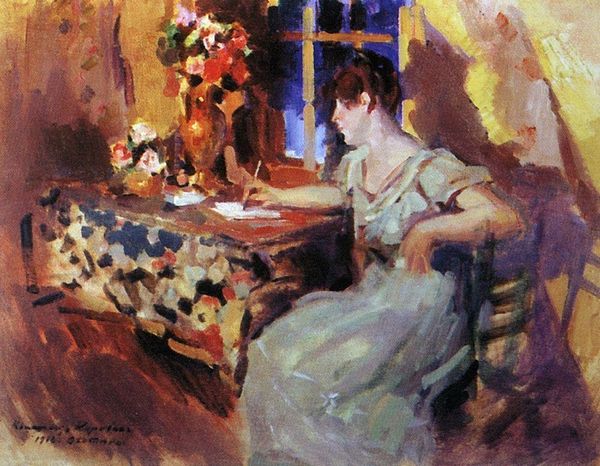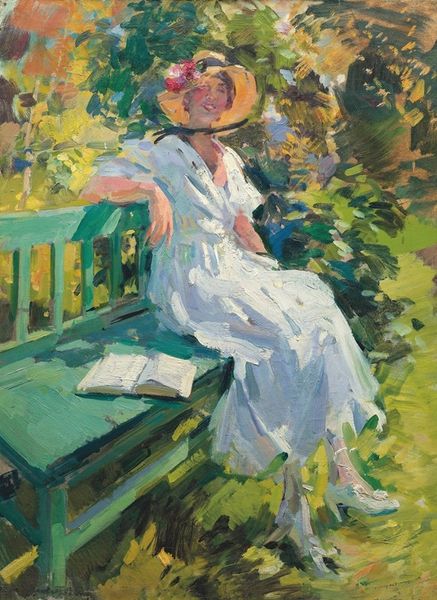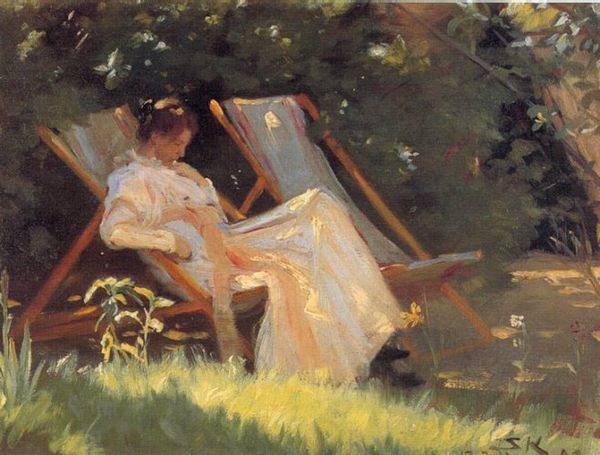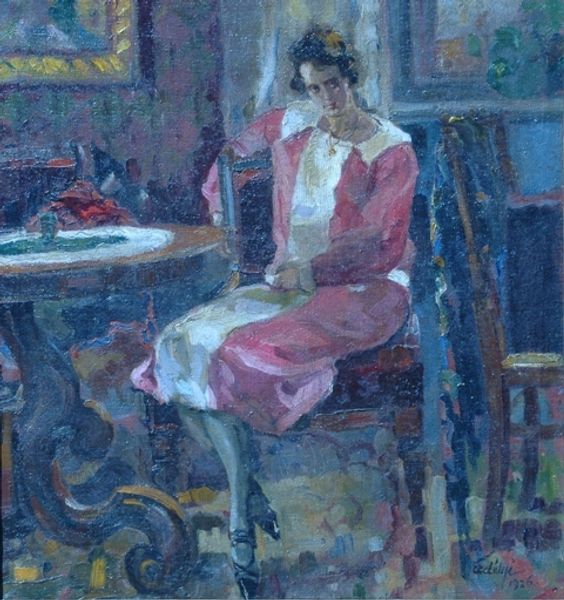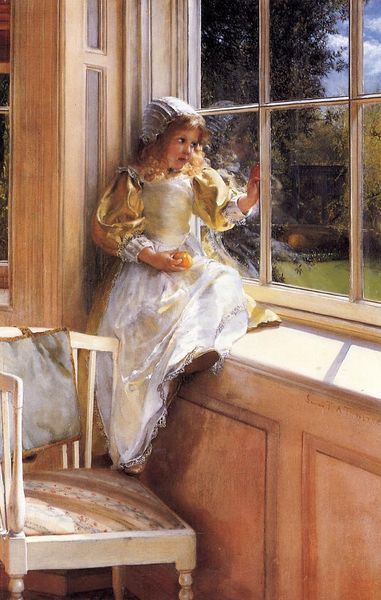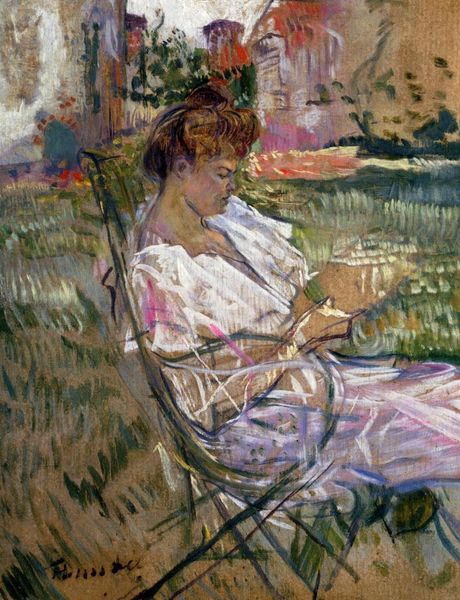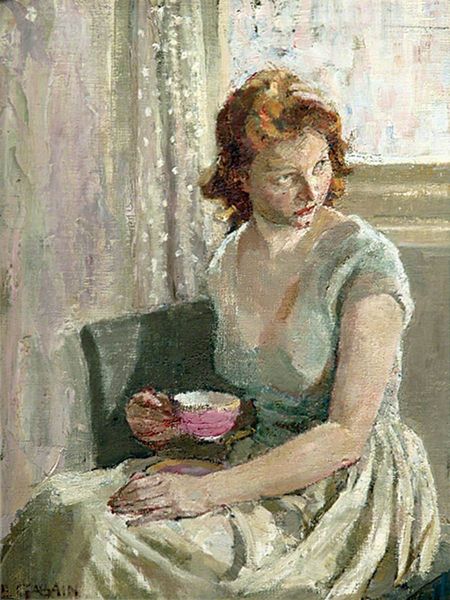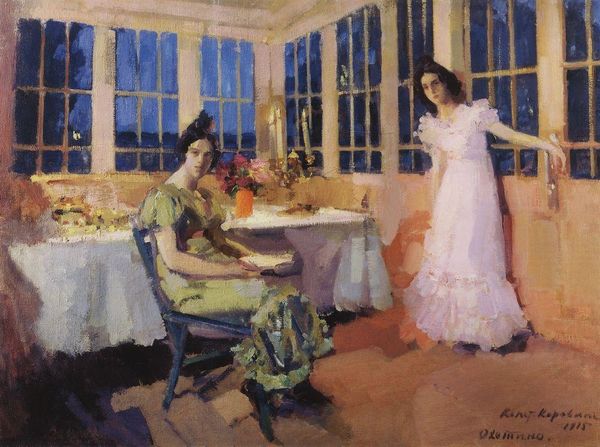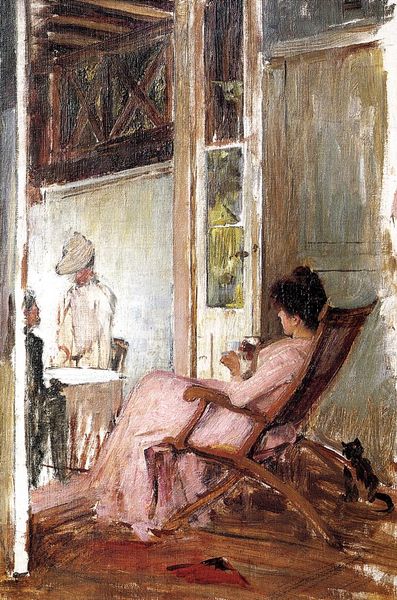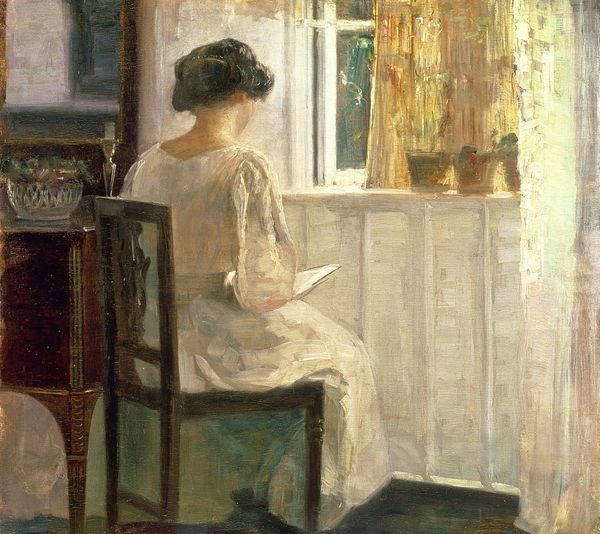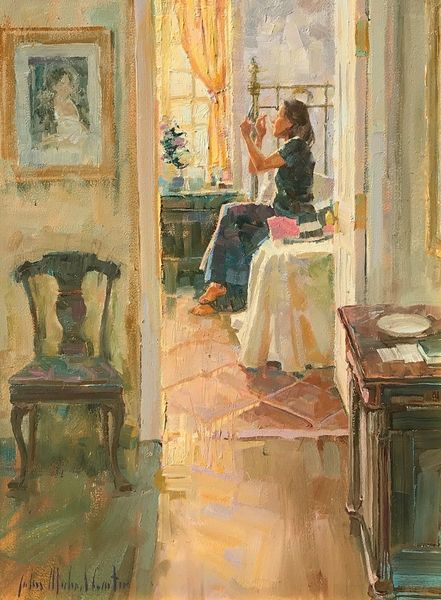
Copyright: Public domain
Curator: Korovin's "The Lady on the Chair," painted in 1917, offers us an intimate glimpse into a domestic scene from a tumultuous period. What's your immediate reaction to this particular tableau? Editor: Visually, it’s a delightful symphony of light. The way the sunlight illuminates the woman's white dress, juxtaposed with the dark chair, creates an interesting contrast. The brushwork itself feels almost effervescent, giving it a carefree feel. Curator: Indeed. And contextually, 1917 Russia was far from carefree; it was a time of revolution and upheaval. The choice to depict this quiet domesticity, perhaps a portrait of bourgeois life, seems quite pointed given the prevailing social unrest. This intimate setting may signify an idealized escape from reality amid troubled times. Editor: Interesting point. From a formal standpoint, observe how the artist employs impressionistic brushstrokes to convey the texture of fabrics, flowers, and skin. The vibrant use of color gives an energy and aliveness to an otherwise still subject. Note too, how the composition draws you in. It is balanced between the table on the left with a vase of flowers and the bright sunlit window on the right side, leading you toward the seated figure as its central point. Curator: That tension is fascinating. The impressionistic style, favored by Korovin, softens the reality. His rendering captures a transient moment, creating a nostalgic interpretation for a world about to disappear, highlighting the fragile peace people yearn for when facing social change. Consider its presentation to audiences then—an emblem of a vanishing way of life in art galleries, reflecting changing social perceptions. Editor: I'd concur that Korovin's masterful use of light and color evokes a specific emotional state. Whether intended as escapist fantasy or commentary, the formal components create the atmosphere of tranquility within this historical canvas. The dynamic, yet gentle brushstrokes seem to animate her poise. Curator: Seeing art as historical commentary requires interpreting these visual elements within broader socio-political themes, and tracing how social constructs of the time may have played a part in forming artistic styles. This interplay is critical in examining not only artworks, but in turn, what and how societies celebrate—or censor—across different eras. Editor: True; and when one examines a piece's composition as well as its physical form, brushstrokes and luminosity do reveal emotional and even historical data beyond the painter's potential scope. Both facets enhance our complete interpretation.
Comments
No comments
Be the first to comment and join the conversation on the ultimate creative platform.
